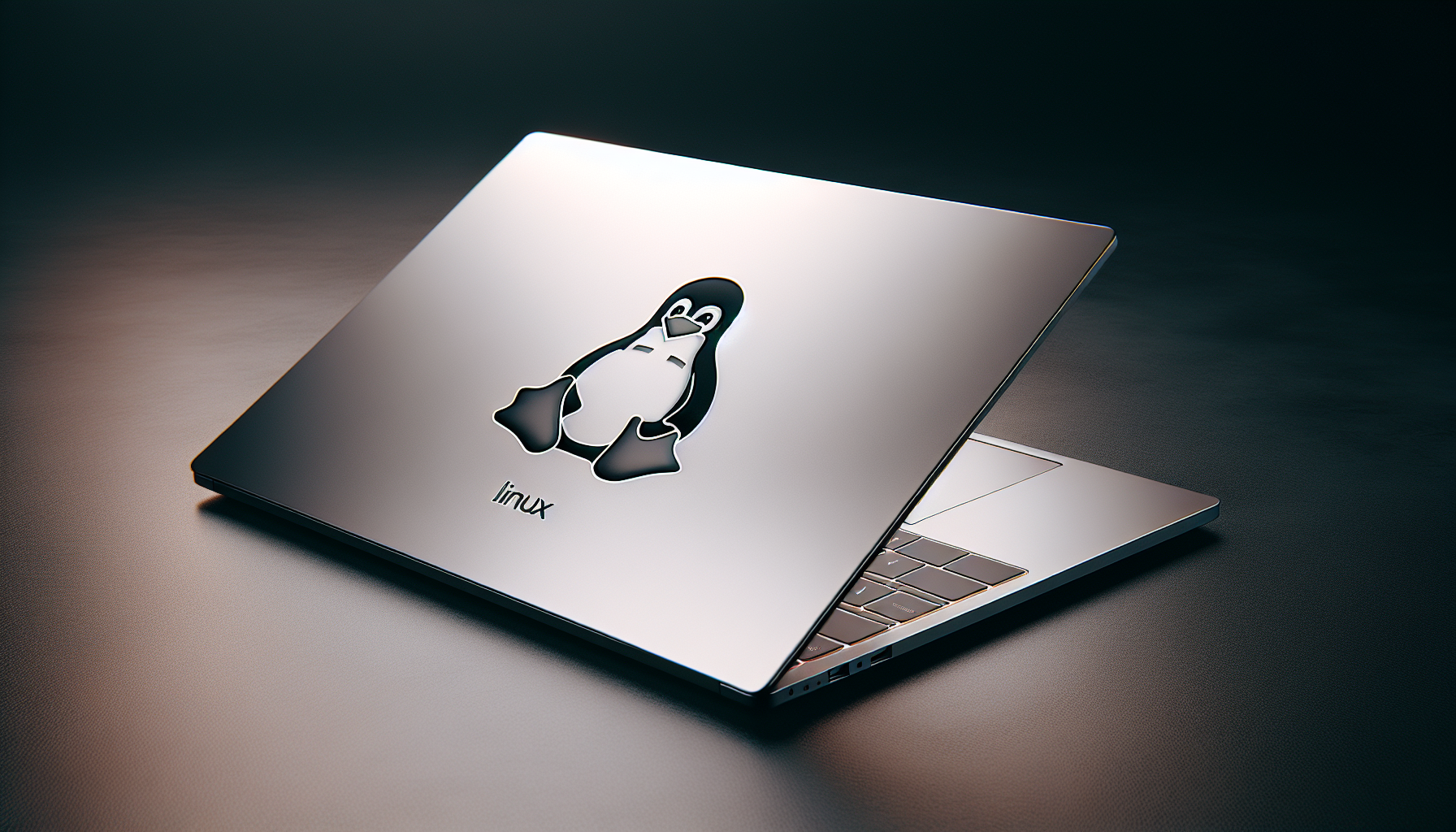







Are you a Linux enthusiast in search of the perfect laptop to complement your operating system? Look no further! In this article, we will explore and evaluate various laptops, considering their compatibility with Linux and their overall performance. Whether you’re a professional developer or simply a tech-savvy individual, we’ve got you covered. Discovering the best laptop for Linux has never been easier, so let’s dive right into the exciting world of Linux-compatible laptops!

Operating System Compatibility
Linux Kernel Support
When considering a laptop for Linux, it is important to ensure that the operating system is compatible with the Linux kernel. Linux kernel support is essential for seamless installation and efficient functioning of the operating system. It is recommended to choose a laptop that is known to have good compatibility with the latest Linux kernel versions, as this ensures that you will be able to take advantage of all the latest features and updates.
Pre-installed Linux Distributions
Another aspect to consider is whether the laptop comes with pre-installed Linux distributions. This can save you the hassle of manually installing the operating system and configuring all the necessary drivers. Some laptops are specifically designed for Linux and come with popular distributions such as Ubuntu or Fedora pre-installed. These laptops often have excellent out-of-the-box compatibility and allow you to start using Linux right away without any extra effort.
Compatibility with Popular Linux Distros
If you prefer to install your own Linux distribution or have a specific preference for a certain distribution, it is important to ensure that the laptop is compatible with it. Different distributions may have slightly varying hardware requirements and compatibility issues. Checking the compatibility of the laptop with popular Linux distributions such as Ubuntu, Fedora, or Debian can help ensure a smooth and hassle-free experience.
Hardware Requirements
Processor
The processor is one of the most important components when it comes to choosing a laptop for Linux. A powerful processor ensures smooth multitasking, fast software execution, and overall better performance. When selecting a laptop, it is recommended to opt for a processor that is capable of handling your everyday tasks and any specific software requirements you may have. Intel Core i5 or i7 processors, as well as AMD Ryzen processors, are popular choices for Linux laptops due to their performance and compatibility with the Linux ecosystem.
RAM
Having an adequate amount of RAM is crucial for a seamless Linux experience. Linux distributions generally require less RAM compared to other operating systems, but it is still essential to have enough memory to handle your tasks efficiently. For basic browsing and office tasks, 4GB of RAM should suffice. However, for more demanding applications or multitasking, it is advisable to go for at least 8GB or 16GB of RAM to ensure smooth performance and prevent any possible issues.
Storage
The storage capacity and type of storage are important factors to consider when choosing a laptop for Linux. Solid-State Drives (SSDs) are highly recommended over traditional Hard Disk Drives (HDDs) due to their faster read and write speeds, which significantly improve the overall performance of the system. It is advisable to choose a laptop with a minimum of 256GB SSD to ensure you have enough space for your files and applications. Additionally, laptops with the option to upgrade or expand storage capacity can be beneficial for future needs.
Graphics Card
The graphics card plays a crucial role in tasks such as gaming, video editing, or 3D rendering. While most Linux distributions come with open-source drivers that support a wide range of graphics cards, some high-performance graphics cards may require proprietary drivers for optimal performance. If you have specific needs that require a powerful graphics card, ensure that the laptop you choose is compatible with your desired card and has proper driver support. Integrated graphics should be sufficient for basic tasks, but for demanding graphical workloads, a dedicated graphics card from NVIDIA or AMD would be a better choice.
Battery Life
Battery Capacity
Battery capacity determines how long your laptop can run on a single charge. When looking for a Linux laptop, it is important to consider the battery capacity according to your usage requirements. Laptops with larger batteries generally have longer battery life, allowing you to work or enjoy multimedia content for extended periods without requiring a power outlet. Look for laptops with battery capacities of 50Wh or higher for optimal battery life.
Power Consumption
Apart from battery capacity, the power consumption of the laptop also affects its battery life. Choosing a laptop with energy-efficient components, such as low-power processors or SSDs, can help extend the battery life. Additionally, some laptops come with power-saving features or software optimizations that allow you to adjust power settings and customize battery usage according to your needs. It’s worth considering these features when selecting a laptop for Linux to ensure optimal battery performance.
Battery Optimization Features
Certain laptops offer specific battery optimization features that can help prolong the battery life even further. These features may include power-saving modes, adaptive brightness control, or intelligent battery management software. These optimizations can automatically adjust various settings to conserve power and maximize battery efficiency. Look for laptops that offer these optimization features, as they can greatly enhance your overall experience by ensuring longer battery life and reducing the need for frequent charging.
Build Quality
Material
The material used in the construction of a laptop determines its durability and overall build quality. Aluminum, magnesium alloy, and carbon fiber are commonly used materials that offer a balance of sturdiness and lightweight design. Laptops made from these materials tend to be more durable and resistant to wear and tear. Additionally, they provide better heat dissipation, which can help keep the laptop cooler during intensive tasks. It is advisable to choose a laptop with high-quality materials to ensure longevity and a premium feel.
Durability
Durability is an important factor to consider, especially if you travel frequently or tend to use your laptop in different environments. Look for laptops that are built to withstand accidental drops, shocks, or spills. Certain laptops are designed with reinforced frames, shock-absorbing features, and spill-resistant keyboards, which provide an extra layer of protection against accidental damage. These durable laptops are ideal for users who require a robust device that can withstand the rigors of daily use.
Portability
If portability is a top priority for you, consider the weight and dimensions of the laptop. A lighter and slimmer laptop is easier to carry around and fits comfortably in backpacks or laptop bags. Ultrabooks or thin and light laptops are designed specifically for portability without compromising on performance. However, it’s important to strike a balance between portability and performance, ensuring that the laptop meets your computing needs while being convenient to carry around.

Display
Resolution
The display resolution determines the sharpness and clarity of the visuals on your laptop screen. Higher resolutions offer more screen real estate and better image quality, allowing you to view content in greater detail. Full HD (1920 x 1080) resolution is considered standard for laptops, providing a good balance between image quality and battery efficiency. However, if you work with graphic design, video editing, or require precise visual details, consider opting for laptops with higher resolutions such as QHD (2560 x 1440) or even 4K (3840 x 2160) displays for an exceptional viewing experience.
Screen Size
The screen size of a laptop determines the overall footprint and viewing comfort. Smaller screen sizes, such as 13 or 14 inches, offer better portability, making them ideal for on-the-go use. On the other hand, larger screen sizes, such as 15 or 17 inches, provide more screen real estate for multitasking and media consumption. The choice of screen size ultimately depends on your preferences and usage requirements. Consider the balance between portability and screen real estate when selecting the right screen size for your Linux laptop.
Panel Type
The panel type of the display directly affects the color accuracy, contrast, and viewing angles. In-plane Switching (IPS) panels are popular due to their wide viewing angles and accurate color reproduction, making them suitable for tasks such as graphic design or photo editing. Twisted Nematic (TN) panels offer faster response times, making them preferred for gaming. If color accuracy and wider viewing angles are crucial for your work, choose a laptop with an IPS panel. However, if you prioritize gaming or fast-paced tasks, a TN panel could be more suitable.
Keyboard and Trackpad
Layout and Customization
The keyboard layout is an essential aspect, especially if you spend long hours typing or require specific key configurations for programming or specialized tasks. Look for laptops with well-spaced keys and a comfortable layout that suits your typing style. Some laptops also offer customizable function keys or backlighting options for improved productivity and convenience. Additionally, check if the laptop supports your preferred language layout to ensure a seamless typing experience.
Key Travel and Typing Experience
Key travel refers to the distance a key travels when pressed, and it directly affects the typing experience. A higher key travel generally provides better tactile feedback and reduces the chances of errors. Depending on your typing preferences, choose a laptop with an appropriate key travel that suits your comfort level. It is recommended to test the keyboard before making a purchase or read reviews from users to gauge the typing experience and overall satisfaction.
Precision and Responsiveness of Trackpad
The trackpad is another important input device that should be taken into consideration. A smooth and responsive trackpad enhances the overall user experience and increases productivity. Look for laptops with accurate and precise trackpads that support multi-touch gestures, allowing you to navigate through the operating system effortlessly. Additionally, some laptops come with fingerprint sensors integrated into the trackpad, offering an added layer of security and convenience for quick authentication.
Connectivity
USB Ports
USB ports are crucial for connecting peripherals such as external hard drives, smartphones, USB flash drives, or other USB devices. Look for laptops that offer an adequate number of USB ports, ideally with a mix of USB 3.0 or USB 3.1 Gen 1 ports for faster data transfer speeds and backward compatibility. Additionally, consider the position and spacing of the USB ports to ensure easy access and compatibility with your existing devices.
HDMI/VGA Ports
HDMI and VGA ports are essential if you plan to connect your laptop to external displays or projectors. HDMI ports are common and provide high-definition audio and video output. VGA ports, although older, are still widely used and offer compatibility with older displays or projectors. Having both HDMI and VGA ports provides flexibility in connecting your laptop to a wide range of external devices. Check if the laptop you choose has the necessary ports to meet your connectivity needs.
SD Card Slot
An SD card slot can be handy for photographers, videographers, or individuals who frequently transfer files from cameras, drones, or other devices. Having an integrated SD card slot eliminates the need for external card readers and allows for convenient file transfers. While not all laptops include an SD card slot, it is worth considering if you regularly work with SD cards and want to streamline your workflow.
Wi-Fi and Bluetooth
Wi-Fi and Bluetooth connectivity are essential for seamless wireless communication. Ensure that the laptop supports the latest Wi-Fi standards, such as Wi-Fi 6 (802.11ax) or Wi-Fi 5 (802.11ac), for faster and more stable wireless connections. Additionally, Bluetooth support enables you to connect wireless peripherals such as headphones, speakers, or gaming controllers. A laptop with robust Wi-Fi and Bluetooth capabilities ensures a reliable and convenient wireless experience.
Performance
CPU Performance
The CPU performance directly affects the overall speed and responsiveness of the laptop. When choosing a Linux laptop, consider a processor that can handle your specific tasks efficiently. Intel Core i5 or i7 processors, as well as AMD Ryzen processors, are popular choices due to their excellent performance and compatibility with Linux. For tasks such as programming, video editing, or running resource-intensive applications, consider opting for a higher-performing CPU to ensure smooth performance.
Multitasking Capability
If multitasking is a key requirement for your workflow, it is important to choose a laptop that can handle multiple tasks without lag or performance degradation. Consider a laptop with a higher number of processor cores, as this allows for better multitasking capabilities. Additionally, having ample RAM ensures that your system can handle multiple applications and processes simultaneously without a significant drop in performance. Opt for a laptop with at least 8GB or 16GB of RAM for smooth multitasking.
Gaming and Graphics Performance
If you intend to use your Linux laptop for gaming or other graphics-intensive tasks, it is crucial to consider the gaming and graphics performance. Look for laptops with dedicated graphics cards from NVIDIA or AMD, as they provide superior gaming performance and can handle demanding graphical workloads. Integrated graphics are sufficient for basic tasks and multimedia consumption, but for an enhanced gaming experience or professional graphics-related work, a dedicated graphics card is recommended.
Price
Budget Laptops for Linux
Budget laptops for Linux offer a cost-effective solution without compromising functionality and performance. These laptops generally have moderate specifications but are capable of handling everyday tasks efficiently. They are suitable for users with basic computing needs such as web browsing, document editing, or streaming media. Budget laptops for Linux can be found in the entry-level to mid-range price range, providing value for money while still delivering a satisfactory Linux experience.
Mid-Range Laptops for Linux
Mid-range laptops for Linux offer a balance between performance and affordability. These laptops typically have better specifications, including faster processors, more RAM, and larger storage capacities. They provide a smoother and more responsive user experience, making them suitable for users who require increased processing power or engage in more demanding tasks such as programming, photo editing, or light gaming. Mid-range laptops for Linux are available in a wide price range, offering good performance without breaking the bank.
High-End Laptops for Linux
High-end laptops for Linux cater to users who demand top-level performance, advanced features, and premium build quality. These laptops are equipped with high-performance processors, ample RAM, fast storage options, and high-resolution displays. They are targeted towards professionals, content creators, or individuals who require powerful machines for tasks such as video editing, 3D rendering, or gaming. High-end laptops for Linux generally have a higher price point but provide uncompromising performance and robust features.
Customer Reviews
Reliability
Customer reviews can provide valuable insights into the reliability of a laptop for Linux. Look for reviews that highlight long-term usage experiences, customer satisfaction, or any recurring issues. Pay attention to feedback regarding build quality, stability of the operating system, and the laptop’s overall durability. A laptop that consistently receives positive reviews for reliability is indicative of its ability to withstand everyday use and provide a reliable Linux experience.
Support and Warranty
Another aspect to consider is the support and warranty offered by the laptop manufacturer. Check if they provide timely support for Linux-related issues and if they have dedicated Linux support channels or forums. A manufacturer that actively engages with the Linux community and provides ongoing software updates and driver support is often a good choice. Additionally, a comprehensive warranty that covers any potential hardware defects or malfunctions reinforces confidence in the product’s quality and the manufacturer’s commitment to customer satisfaction.
User Experience
User experience feedback from other Linux users can provide valuable insights into the overall satisfaction with a particular laptop model. Look for reviews that highlight the ease of installation, compatibility with different software and Linux distributions, as well as any specific features or optimizations that enhance the user experience. Reviews that demonstrate positive long-term usage experiences and highly recommend the laptop can help ensure a positive Linux journey for you as well.
Choosing the best laptop for Linux involves considering various factors such as operating system compatibility, hardware requirements, battery life, build quality, display, keyboard and trackpad functionality, connectivity options, performance, price, and customer reviews. Prioritizing your specific needs, preferences, and budget will help narrow down the options and find the perfect Linux laptop that suits your requirements. Remember to thoroughly research and read reviews before making a purchase to ensure a satisfying and seamless Linux experience.




